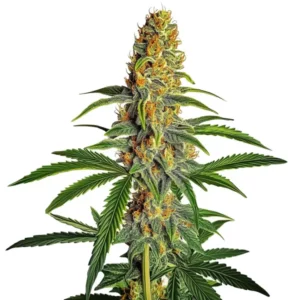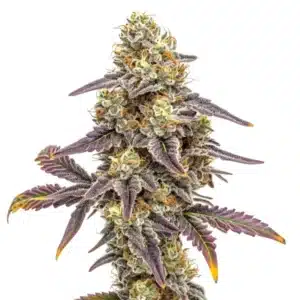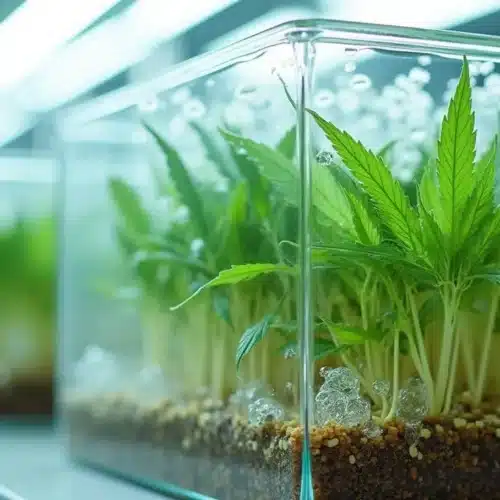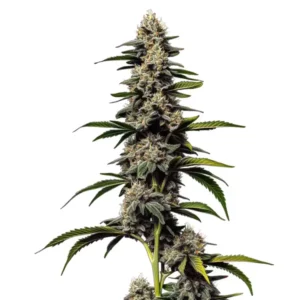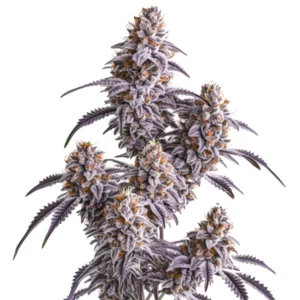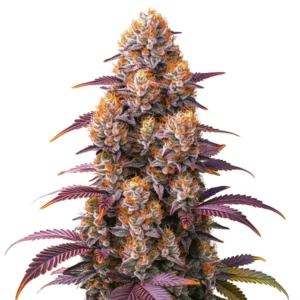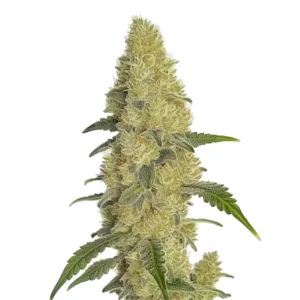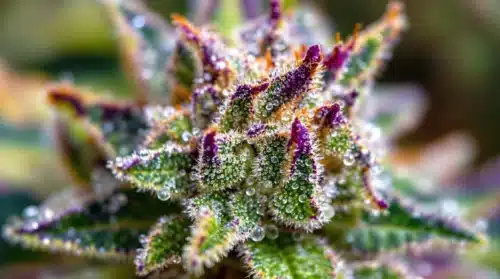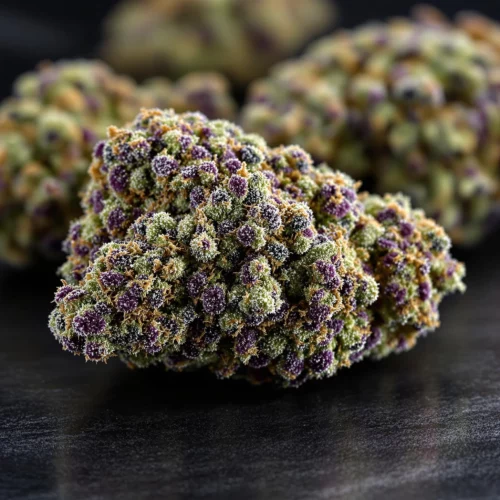The cannabis plant is renowned for its diverse array of effects, making it a fascinating subject for both users and cultivators alike. One term that’s essential for cannabis potency is TAC, which stands for Total Active Cannabinoids. But what does TAC truly entail, and why should it matter to you?
Total Active Cannabinoids
Total Active Cannabinoids encompasses the overall concentration of cannabinoids present in a specific cannabis strain. This includes well-known compounds such as THC and CBD, but also lesser-known ones like CBG and CBC. Each cannabinoid can produce different effects on the body and mind, which is why TAC serves as a guideline indicating how strong or effective a particular strain may be.
For instance, if you come across a strain boasting a high TAC, you might expect its effects to be significantly stronger than those of a strain with lower TAC. Imagine you’re looking for something to help you wind down after a long day. A strain with high TAC might provide the relaxation you seek, while a lower TAC strain could leave you wanting more. Ultimately, TAC can influence your decisions whether you’re using cannabis for recreation or medicinal purposes.
The Importance of TAC in Cannabis Selection
When it comes to selecting cannabis strains, knowing the TAC can be incredibly beneficial. If you’re seeking powerful effects, you might lean toward strains with higher TAC levels. Conversely, if you prefer a more subdued experience, choosing a strain with lower TAC could be the way to go. Having this information allows users to make well-informed choices that align with their personal preferences and desired outcomes.
For growers and cultivators, TAC levels can guide breeding decisions. If a grower aims to create a strain that maximizes certain therapeutic effects, such as pain relief or relaxation, having a good grasp of how TAC levels function can be vital. This not only meets consumer demand but also ensures the quality and effectiveness of the final product.
Promos & Deals
Factors Affecting TAC Levels
Several factors influence the total active cannabinoid content in cannabis plants. One of the most significant factors is genetics. Different strains exhibit varying cannabinoid profiles due to their unique genetic structures. For example, some strains are specifically bred for elevated THC levels, while others are cultivated with a focus on maximizing CBD content.
Beyond genetics, growing conditions play an equally crucial role. Aspects like lighting, temperature, soil quality, and nutrient availability can dramatically affect how a cannabis plant develops its cannabinoids. For instance, plants nurtured in optimal conditions tend to show significantly higher TAC levels compared to those grown in less favorable circumstances. Knowing how to create the right environment can be a game-changer for growers.
Impact of Harvesting and Curing on TAC
Harvest timing is another essential aspect that can significantly influence TAC levels. If cannabis is harvested too early, it may not have developed its full cannabinoid profile. On the flip side, leaving the plant in the ground for too long could result in the degradation of certain cannabinoids, ultimately affecting the overall TAC reading. Timing can be crucial for ensuring a high-quality final product that meets the desired standards.
Curing also plays a pivotal role in this process. A well-executed curing process allows for the breakdown of chlorophyll, promoting enhanced flavors and aromas while stabilizing the cannabinoids. This step can also change the bioavailability of cannabinoids, or how effectively they interact with the human body. Proper curing could mean the difference between a product that’s merely good and one that’s truly exceptional and memorable.

Measuring TAC in Cannabis Products
Measuring TAC usually involves laboratory testing, where specialized tests analyze plant materials to yield detailed reports on their cannabinoid content. Many dispensaries are committed to transparency and provide lab results for their products, allowing customers to see precisely what TAC levels they can anticipate.
This level of transparency is instrumental for consumers aiming to make informed choices based on scientific data. It empowers individuals to choose strains that cater to their specific needs, whether they seek relief from physical discomfort or simply want to relax and enjoy themselves. Lab results hold particular value for medical patients who rely on specific cannabinoid ratios for effective treatment outcomes.
Interpreting Lab Test Results
When you encounter a lab report detailing TAC, you will often see it expressed as a percentage alongside individual cannabinoids. For example, a product might indicate a TAC of 20%, comprised of 18% THC and 2% CBD. These figures allow you to form expectations about how the strain might perform. However, it’s important to remember that the overall experience can also be affected by other components in the plant, particularly terpenes.
Speaking of terpenes, these aromatic compounds can considerably enhance or modify the effects of cannabinoids. They contribute to what’s known as the “entourage effect,” which occurs when different compounds work together to produce effects that may differ from each one acting in isolation. This interplay can create a richer and more nuanced experience, showcasing the intricacies of cannabis consumption.
Misconceptions About TAC
One prevalent misconception is the belief that a higher TAC level automatically means a better product. While it’s true that high TAC may indicate more intense effects, the quality of a strain is influenced by numerous additional factors including strain characteristics and individual body chemistry. Some users might find lower TAC strains more enjoyable or effective for their specific needs.
Another misunderstanding is regarding the interaction of cannabinoids. Many people think of cannabinoids as functioning in isolation; however, the reality is more complex. The interaction between cannabinoids and terpenes can shift the experience significantly. For instance, a strain high in THC but low in CBD could deliver entirely different effects compared to one with a balanced ratio of both cannabinoids. This complexity helps users make more tailored selections.
How TAC Influences Medical Use
For medical cannabis users, TAC serves as a valuable guideline for selecting the right strains to address specific conditions. Familiarity with different cannabinoid profiles allows patients to seek out strains that target symptoms effectively, whether it’s helping manage anxiety, alleviating chronic pain, or aiding in the treatment of cancer-related complications.
It’s advisable for novice users, particularly those pursuing medicinal benefits, to begin with products exhibiting lower TAC. This gradual approach helps familiarize them with how cannabis affects their unique body chemistry and reactions, reducing the likelihood of overwhelming effects precipitated by high TAC strains.
Practical Tips for Consumers and Growers
For consumers venturing into the world of cannabis, checking for lab reports is crucial. These documents offer vital insights into TAC and individual cannabinoid composition, guiding users toward informed choices. It’s also beneficial to read reviews and recommendations; personal experiences can often shine a light on the attributes that statistics alone cannot reveal.
Likewise, for growers, paying attention to the breeding process is essential. Selecting parent plants with desirable TAC profiles can significantly increase the potential for producing sought-after strains. Additionally, maintaining optimal growing conditions will enhance cannabinoid development, which can ultimately lead to a more robust and valuable harvest.

Storing Cannabis to Maintain TAC
The way you store your cannabis can have a substantial impact on its TAC levels. Exposure to light, heat, and moisture can all degrade cannabinoids over time. Ideally, you should keep your cannabis stored in a cool, dark place in airtight containers. This simple precaution helps maintain the potency and effectiveness of your product.
Moreover, regularly monitoring the conditions of your stored cannabis can ensure you preserve the highest quality. Factors like humidity and temperature can fluctuate, so utilizing tools designed to monitor these conditions can be invaluable. Adequate storage practices can extend the longevity of your cannabis products and maintain their desired effects over time.
FAQs About TAC
What does a high TAC level indicate?
A higher TAC level typically suggests a more potent strain, which may offer stronger effects. This can be particularly advantageous for individuals seeking a significant therapeutic or recreational impact from their cannabis experience.
Can TAC levels change over time?
Yes, TAC levels can fluctuate due to various factors, including changes in growing conditions and harvesting techniques. Proper care throughout cultivation is essential to preserve the desired TAC levels.
How can I use TAC for medical purposes?
By monitoring TAC levels, patients can select strains that align with their medical requirements. Opting for products with specific cannabinoid profiles enables patients to target their symptoms more effectively, enhancing their overall treatment experience.
Is it necessary to consider TAC for recreational use?
While it isn’t strictly necessary, considering TAC can significantly enhance the recreational user experience by aiding in the selection of strains that deliver the desired effects, making your time more enjoyable.
Where can I find TAC information for cannabis products?
Laboratory testing results can often be found at dispensaries. Always look for these reports to garner reliable, scientific insights about TAC and cannabinoid content before making a purchase.
What should I do if I find the effects too strong?
If you discover that the effects are too strong due to elevated TAC, it may be wise to switch to a product with lower TAC or a different cannabinoid profile. A “start low and go slow” approach is a sound strategy for those new to cannabis.

